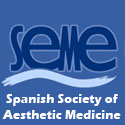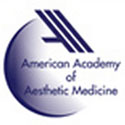FAQ Varicose Vein Treatment
How do I begin leg vein treatment?
During the initial consultation, you will undergo a general examination, your legs will be screened and a Colour Doppler ultrasound evaluation will be performed. The treatment that will suit you best, depending upon the size and extent of your problem, will be detailed. Any questions you may have will be answered.
What are varicose veins?
Varicose veins are abnormally swollen or enlarged blood vessels in the leg caused by the failure of the valves in the veins. Varicose veins and spider veins can be found in 35% of women and 20% of men above the age of 20. They appear as either bulging and rope-like, or small and thread-like. They can result in aching, tired and swollen legs, create a burning, throbbing, or itching sensation. When left untreated, they can generate complictions as thrombosis, hypodermatis or venous ulcer. Varicose veins are a vascular disorder requiring treatment for medical reasons.
What causes varicose veins?
Heredity is a primary factor in over 85 % of the cases of varicose and spider veins. Women are more likely to suffer from abnormal leg veins. Up to 40% of women in Europe may be affected. Hormonal factors including puberty, pregnancy, menopause, the use of birth control pills, estrogen, and progesterone further increase your chances of developing vein disorders. Other contributing factors include prolonged standing, obesity and leg injury.
What are spider veins?
Telangiectasias called “spider” veins appear to be hormonally induced and are associated with pregnancy and menstruation. Although spider veins are not usually symptomatic, the accompanying reticular veins, found deeper in the skin, often cause discomfort. Reticular veins are also referred to as “feeder” veins. Many women have a combination of both varicose and spider veins. While they may seek treatment for cosmetic improvement, many female patients are in fact looking for relief from pain.
What is sclerotherapy?
Sclerotherapy involves the use of a very small needle to inject a solution into the diseased veins. The solutions work by causing the veins to shrink, close off and gradually disappear. The needles used are very small and feel like a mosquito bite. Most people find this relatively painless. The success of the sclerotherapy relies upon the experience and skill of the vein surgeon. Choosing the right injection site, volume, concentration and “exposure time” make the difference between success and failure.
How many sclerotherapy sessions will I need?
Sclerotherapy treatment sessions usually last 20 to 25 minutes. Every patient is different, and the number of Sclerotherapy treatment sessions needed varies depending on the severity of your condition. Most cases require two to six treatments, however, this is only a guideline and your individual case may be different. Improvement may show in as little as one or two weeks, but the best results are usually seen after several sclerotherapy treatment sessions.
What is the Endovenous Laser Ablation (vein laser treatment)?
It can be described as “No surgery, no scar, no hospitalisation, no anaesthesia” technique. Vein laser treatment, Endovenous Laser Treatment (EVLA) is a new minimally invasive method for treating large varicose veins that in most cases eliminates the need for open surgery. It requires only local anaesthesia and no hospitalisation. A thin laser fibre is inserted into the faulty vein through a small opening. The entire procedure takes about one hour and causes minimal to no pain. Performed under ultrasound guidance, EVLA uses laser energy to treat the underlying cause of varicose veins by closing off the insufficiency vein to any future blood flow. Your body then naturally uses other healthy veins to return blood from the heart.
Marbella Vein Clinic in Spain has been using EVLA since 2002. The Advanced Marbella Vein Clinic has been successfully treating hundreds of patients with the 980 Nm diode laser.
More recently, a major improvement has been achieved in EVLA with the development of a new Laser system: The ELVeS* Painless 1470 Nm used with a new fibre design, the Radial* Painless. Marbella Vein Clinic is among the first Vein clinics that are making this ultimate generation laser varicose vein treatment available for their patients. This system allows efficient treatment using very low laser power with virtually no side effects, no bruisinig and no pain.
Is the vein laser treatment procedure painful and how long does it last?
Laser vein removal is performed under local anaesthesia. Most patients have experienced very little to no discomfort. The length of the laser vein removal procedure depends upon the extent of the microphlebectomy that has to be performed in association with the Endovenous Laser vein treatment as we intent on providing our patients with complete varicose vein treatment in one session.
Will I have pain after Endovenous Laser treatment?
The introduction of the new ELVeS Painless Laser used in association with the Radial fibre has opened a new era in the treatment of varicose veins. The majority of our patients operated on with this new Laser vein removal system have experienced no pain during or after the vein treatment. After the Laser vein treatment is done, you will be able to walk immediately and resume normal activity the next day.
Which complications are associated with this Laser vein treatment?
There are potential complications with any medical procedure. The only minimal complication yet experienced with the endovenous laser surgery ablation procedure has been a small number of cases of temporary paresthesia (numbness) in a limited area on the inner part of the leg.
How will my blood circulate if I eliminate my varicose veins?
Varicose veins are a burden on your circulation. Because the blood inside them is refluxing (going backwards), correcting the flow will improve your circulation. As a result of closing diseased veins, the many good veins will take over the blood flow.
Wouldn’t closing varicose veins just redirect flow into normal veins and make them also become varicose?
Since varicose veins have abnormal blood flow, the surrounding veins are already being burdened by having to compensate. Treatment of abnormal veins actually removes this burden from the surrounding veins, thereby improving the venous circulation. This improvement in the venous circulation accounts for the improvement in varicose vein symptoms following effective varicose vein treatment. This is because the body redirects the blood flow into stronger, healthier, deeper veins within the legs.
What happens if I need bypass surgery in the future, and the saphenous vein has been removed?
By definition, these veins are diseased and would not be used for any sort of bypass anyway. Most surgeons will not use a refluxing saphenous vein for bypass. The vein is enlarged and scarred, and generally makes a poor choice for use as a bypass graft. Other veins or grafts would have to be used even if the diseased vein was still present.
Does my insurance cover the varicose vein treatment?
Almost all insurance companies will cover vein treatments that are medically necessary. For suitable cases, the clinic will provide you with all necessary medical information for review by your medical insurance for you to seek reimbursement or to obtain letter of guarantee.
What will happen if I don’t treat my varicose veins?
Varicose vein disease is a progressive disease that, if left untreated, will only get worse. In severe cases, varicose veins can cause skin damage, ulcerations and blood clots. When making a decision about your varicose veins, keep in mind that the sooner you get your veins treated, the easier they are to treat and control.
What should I look for in a physician?
Experience matters. Varicose vein disease can be very complex and each patient is unique. Therefore, it is important to find a physician who has acquired expertise in treating the entire spectrum of vein disease from spider veins to large varicose veins to leg ulcers.









